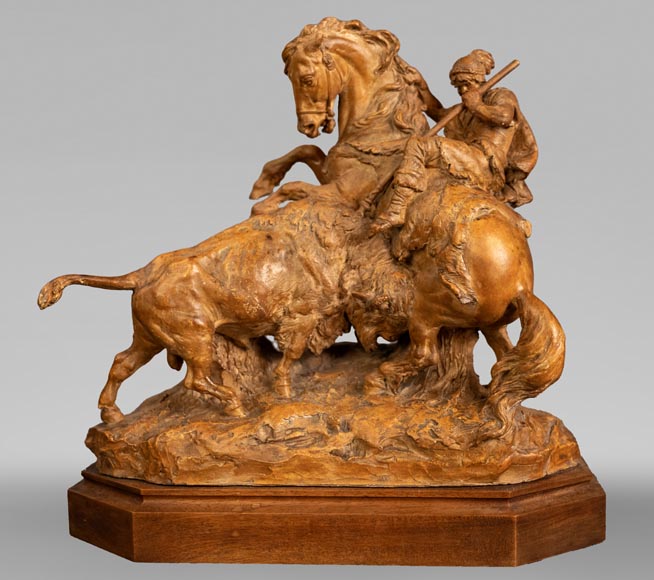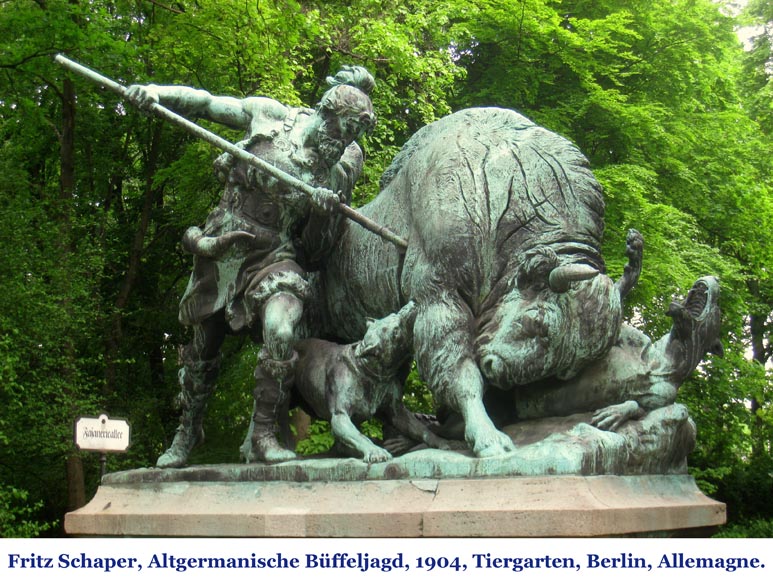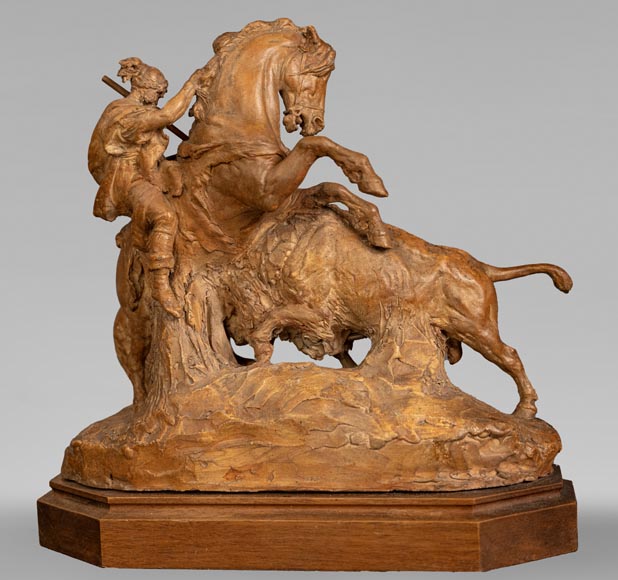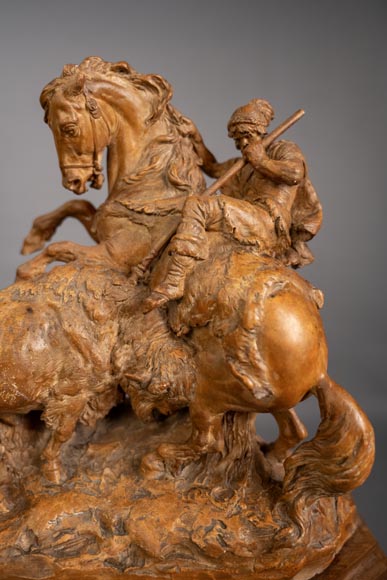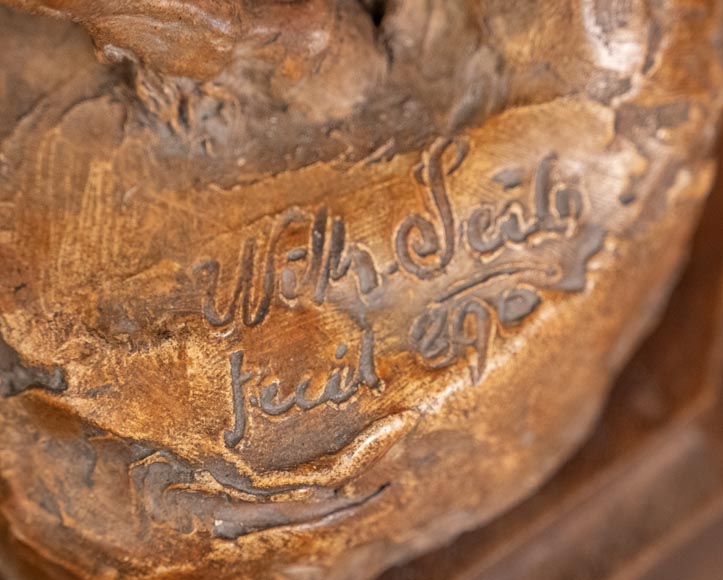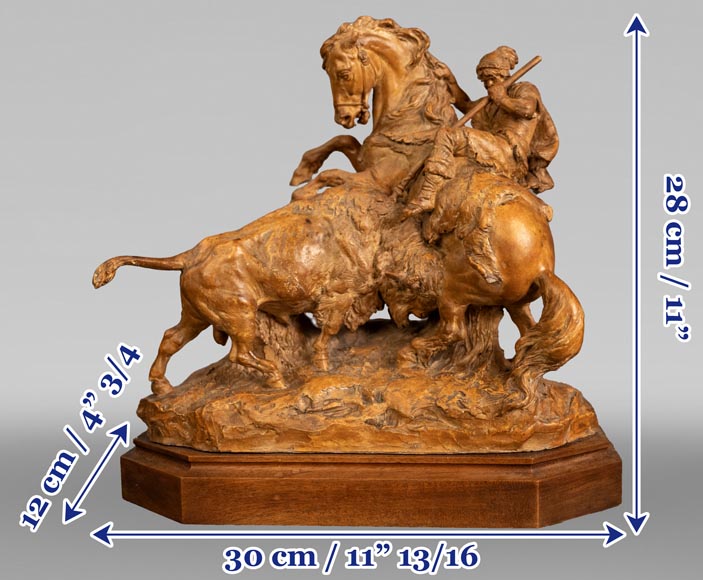Style Other / Ref.14518
Wilhelm Seib, Bozzetto of The Bison Hunt, 1890
Dimensions
Width 11'' ¾ 30cm
Height 11'' 28cm
Depth: 4'' ¾ 12cm
Origin:
Austria, 1890
This terracotta bozzetto was created by Wilhelm Seib in 1890, as indicated by the signature and date: “Wilh Seib fecit 890”.
The Austrian Wilhelm Seib (Stockerau, 1854-Spannberg, 1924) was both a sculptor, painter, and architect. He studied at the Academy of Fine Arts in Vienna with Franz Bauer starting in 1868, then studied sculpture under Carl Kundmann between 1872 and 1880. He then undertook a study trip to Italy. Upon returning to Austria, he distinguished himself with his talent for animal sculpture, particularly equestrian scenes.
This hunting scene showcases his talent for animal representation and the academic realism that characterized his style: a hunter on horseback thrusts his spear into the body of the charging beast, which attempts to overturn the rearing horse. Full of life, the action is captured by the sculptor in its full movement. The horse’s wide-eyed expression, extremely realistic, corresponds to the finesse of the details such as the bison’s fur, which echoes the animal skins worn by the hunter, and contrasts with the sheen of the horse’s short coat.
The freedom inherent in the art of the bozzetto, the initial sketch of the work, allows the artist to fully unleash his imagination and talent. The final work is not known to us; perhaps it was never ultimately executed.
The theme of bison hunting was very present in European sculpture at the end of the 19th century. Some sculptors, such as the French Théodore Baur, chose to depict scenes of bison hunts by Native Americans. The German artist Fritz Schaper, on the other hand, placed his bison hunt in the time of Albert I the Bear (c. 1100-1170). In Seib's work, this piece seems to be closer to illustrations of prehistoric or medieval life (the bison being still very present in Europe until the early Middle Ages) that flourished in various European arts at the end of the 19th century.
This bozzetto can be compared with Fritz Schaper’s work titled Altgermanische Wisentjagd (Old Germanic Bison Hunt). Indeed, not only do both works depict a bison hunt in ancient Germany, but the two main characters of this work, namely the hunter and the bison, are remarkably similar to those modeled by Seib.
Informations
Price: on request
Recommended for you :
Dimensions:
Width: 57
Height: 64
Depth: 42
Dimensions:
Width: 15
Height: 14
Depth: 7
Dimensions:
Width: 47
Height: 23
Depth: 26
Dimensions:
Width: 35
Height: 111
Depth: 43
Dimensions:
Width: 28
Height: 63
Depth: 24
Dimensions:
Width: 36
Height: 68
Depth: 26
Dimensions:
Width: 10
Height: 23
Depth: 8
Dimensions:
Width: 36
Height: 54
Depth: 23
Dimensions:
Width: 25
Height: 43
Depth: 23
Dimensions:
Width: 23
Height: 45
Depth: 17
Dimensions:
Width: 27
Height: 49
Depth: 28
Dimensions:
Width: 43
Height: 100
Depth: 33



